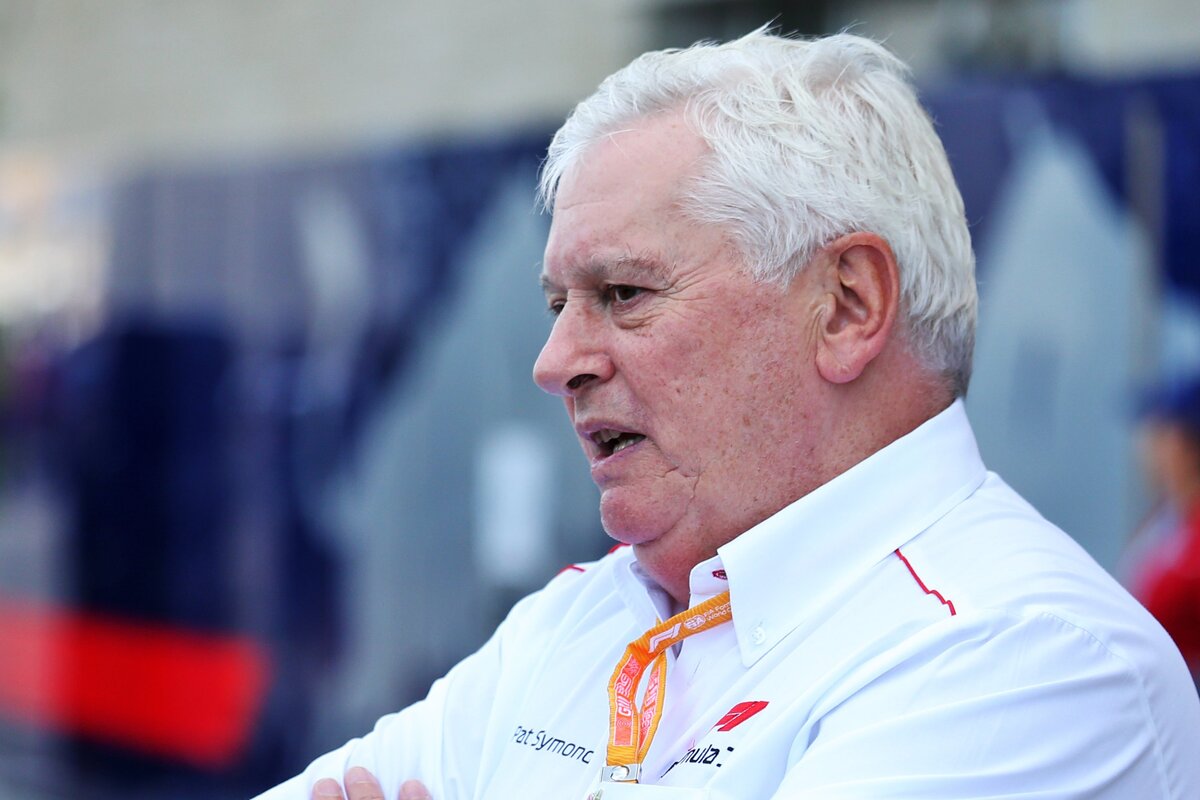

F1 chief technical officer Pat Symonds has explained the process and rationale behind the sport developing its own sustainable fuel.
In 2026, the use of fossil fuels will be banned in Formula 1 as the broader business looks to become carbon zero by 2030.
That has prompted research into the development of alternative fuel, with two different methods currently being developed.
F1 will look to use new deposits of carbon for its fuel while, for Formula 2, a target of 2027 has been set for production of fuel using carbon capture technology.
“There’s sustainable aviation fuel, there’s hydrogen and there are so many different terms that it can get quite confusing,” Symonds explained.
“But what we really mean by a sustainable fuel is one where the hydrogen comes from sustainable sources.
“It comes from either using wind power or solar power to produce the electricity that splits up hydrogen from water.
“And the carbon must be extracted from carbon that wasn’t deposited millions of years ago, it wasn’t carbon that’s from a fossil source, it’s carbon that has been recently in the atmosphere, has probably gone into a plant or into waste or whatever, and we extract it again.
“We produce the fuel from it and we use it once more.
“So really, this is where we get our neutrality from, the fact that carbon is in a circular path; it’s going from the plant, to the fuel, into the air, into the plant into the fields, fully circular path.
“And of course, all the manufacturing, and the transport and everything like that all comes into the lifecycle analysis of this fuel, so we really need to make all of that carbon neutral as well.”
By Symonds’ own admission it’s an ambitious plan, both to reach carbon zero but also to produce the fuel. Currently, it can be done only in a lab.
There is an element of social responsibility involved in the project.
Formula 1 cars on track account for 0.7 percent of the sport’s carbon footprint – sustainable fuel will therefore have a comparatively minuscule impact.
However, there is a bigger game at play and one in which F1 is deliberately looking to lead the way in.
“If we’re using 100 percent sustainable fuel, if we’re showing it’s a drop in fuel, it’s a fuel that we can use in cars with an absolute minimum of modifications – by that I mean a little bit of remapping and things like that, but no real physical changes to the car – then we’re producing something that has a benefit to all the internal combustion engines that are out there,” Symonds explained.
“The global car park is predicted to be about 1.4 [billion] cars by 2030 and of those, the vast majority will still have internal combustion engines.
“So if we can fill all those cars with a sustainable fuel, we really will make a big difference to the whole global warming scene.”
That is a stretch target, not one Symonds expects to be able to deliver by 2030, instead predicting 2050 as a more realistic timeframe.
“So really, this is something that if we can demonstrate in Formula 1 that you can produce a fuel that is sustainable, that is carbon neutral, that can be produced at scale, or can be produced at a sensible price, and then goes out into the entire carpark, then we really are getting somewhere, I think.”
Formula 2 has moved to 55 percent sustainable fuel this year, and will be 100 percent sustainable for 2027 – the carbon capture aspect requiring additional time to bed down before it’s ready to produce the quantities of fuel required.




















Discussion about this post